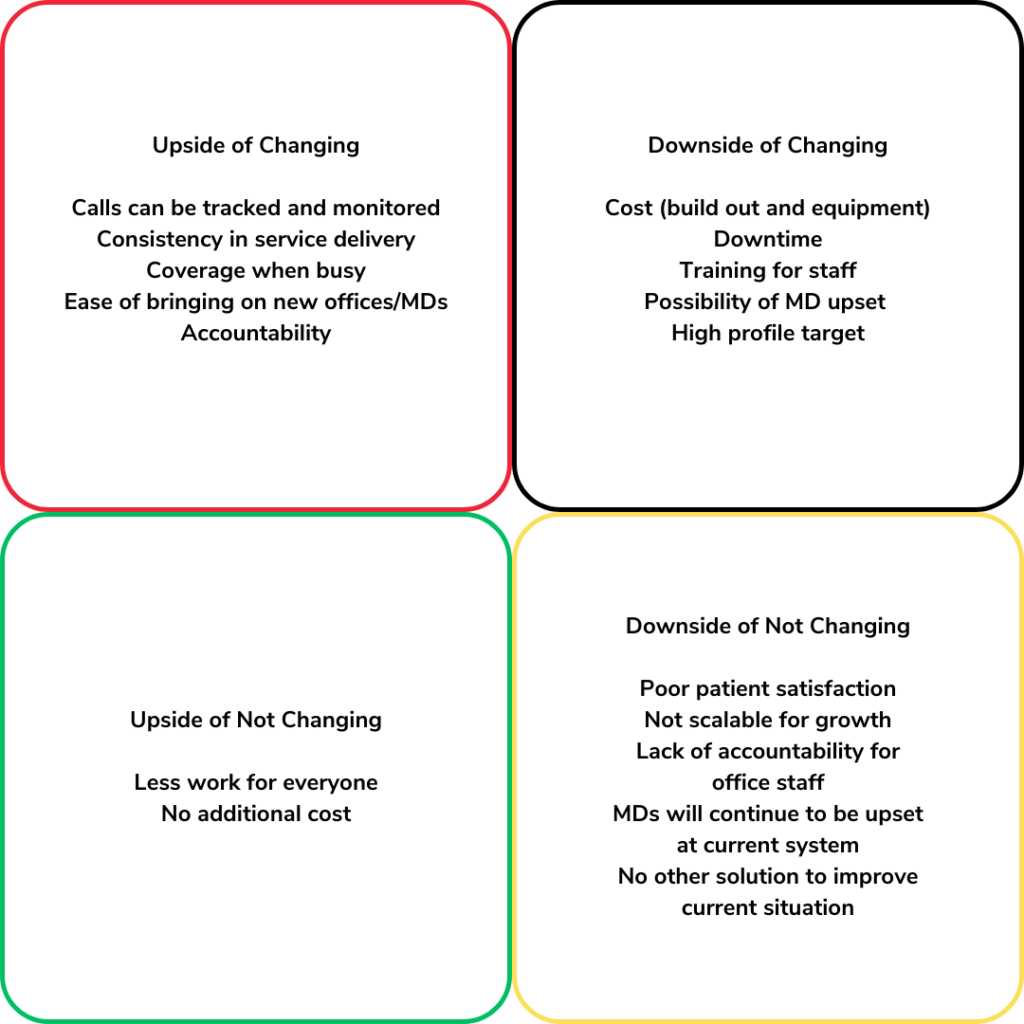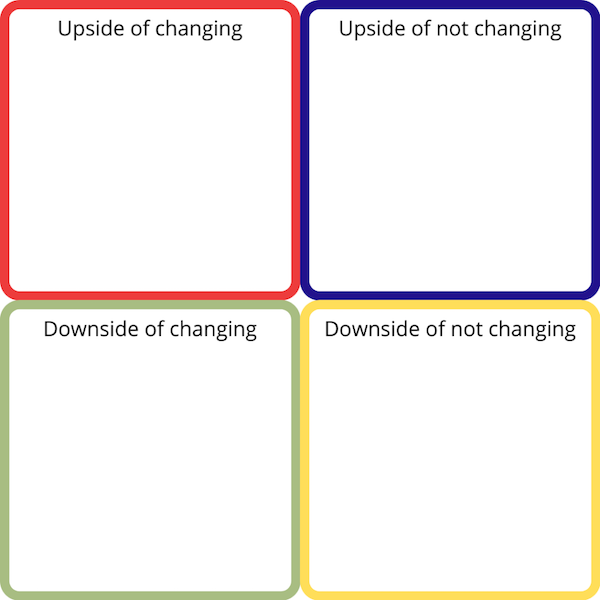One of my favorite change management exercises is The Upside and Downside of Change. This exercise helps us unearth the negative feelings one may have about a change as well as see the benefits of changing.
The Purpose:
- Help participants understand that all change has both an upside and a downside.
- Allow individuals to think about their own feelings about the changes they need to make.
- Help individuals learn about and begin to understand other people’s feelings about the changes that are occurring.
Call Center Implementation Example:
I conducted this exercise with my team when we were considering implementing a call center for a physician group. The group had over 10 locations. Each location had its own phone number and calls were answered by the staff at each location. Physicians liked that their staff was able to represent them and their location well to callers, however, if the line was busy or if the employee called out, patients would not get timely service. Moreover, some of the offices weren’t as busy as others. Devoting a full-time front office employee to answering calls created inefficiency.
We considered a call center to solve these problems, but were met with a great deal of push back. Specifically, physicians were concerned that we would lose the “community feel” when the function became centralized.
Here are our notes from the exercise:

Going through this exercise helped us de-risk the change. We paid extra attention to the items in “Downside of changing” quadrant. For example, to address “Decreased personalization in service,” we created an extensive training program for the call center agents which included having them train at the locations they will be taking calls. We want to make sure agents felt like they’re a part of that office. When speaking about the office, they were able to say “we” instead of “they”.
Try it for your team!
Directions:
- Ask participants to think about the change initiative from their perspective.
- Utilizing the template above, fill in each quadrant as a group. (This can also be done in pairs of participants are not comfortable voicing their opinions in a large group).
- Present a sample case study to illustrate the points.
- Ask probing questions such as:
- What are some risks if we move forward?
- What will changing or not changing cost us (in terms of productivity or reputation)?
- How will this affect morale?
- Share insights and perspectives in order to help promote discussion.

Once you have chosen to adopt change, ask your team, How can we mess this up? List all the ways it could possibly go sideways. Addressing this list is how you hedge the risks!
This is just one example of how we can get everyone on the same page. The more process we can put behind a change, the better it will be understood and accepted by everyone.
Don’t miss our next post! Check out Wendy Fong’s next blog, There Is No Way to Have It All.

